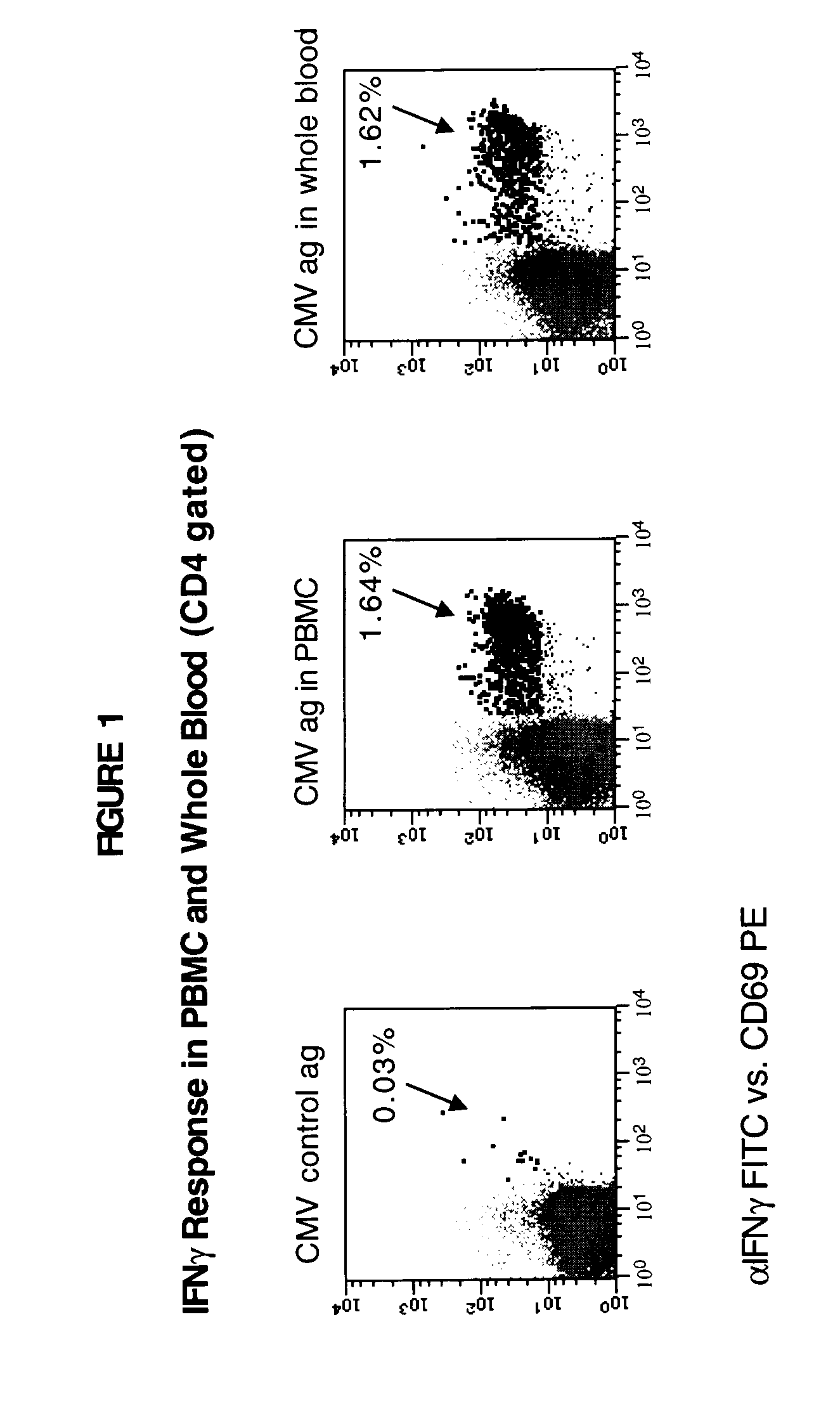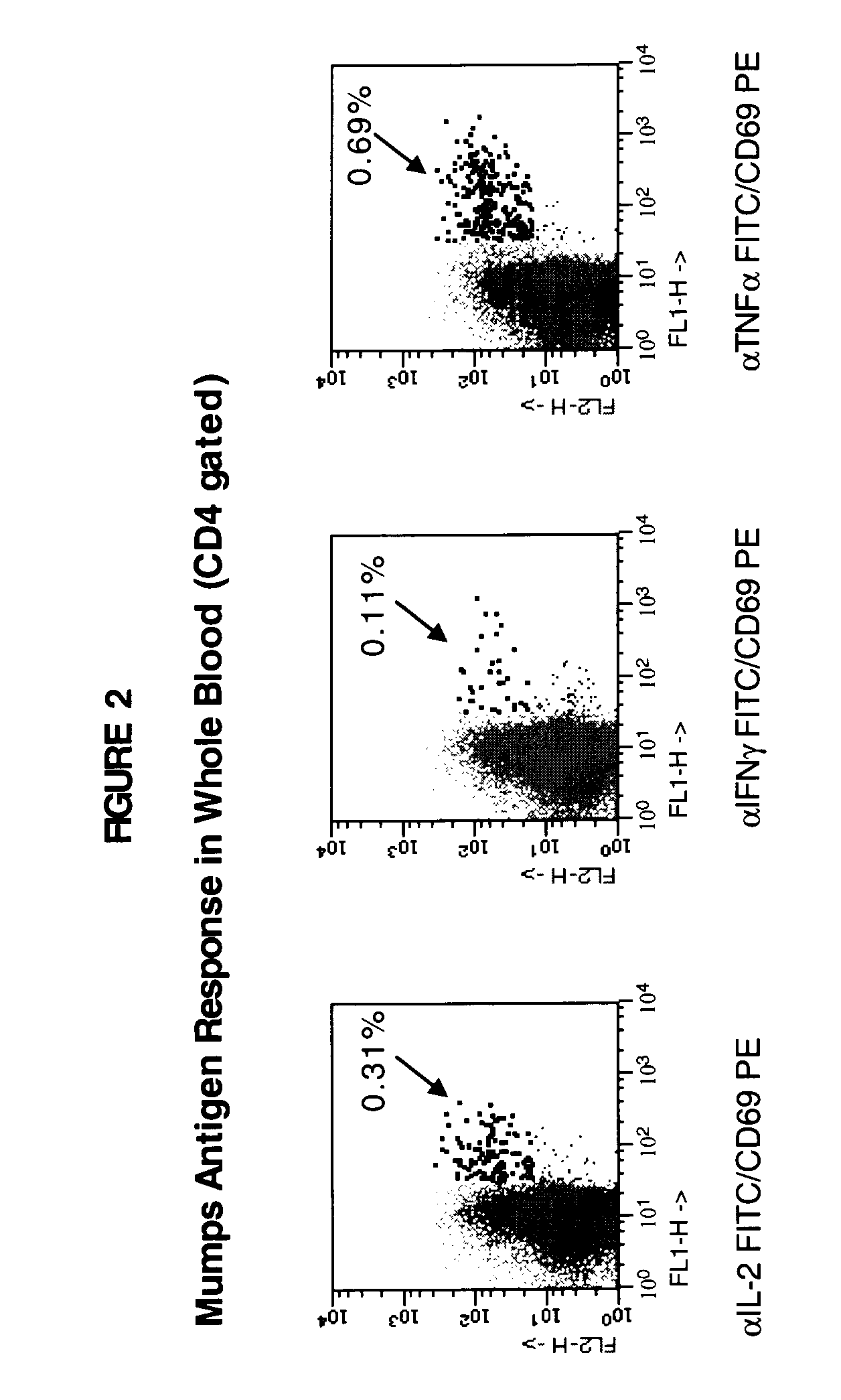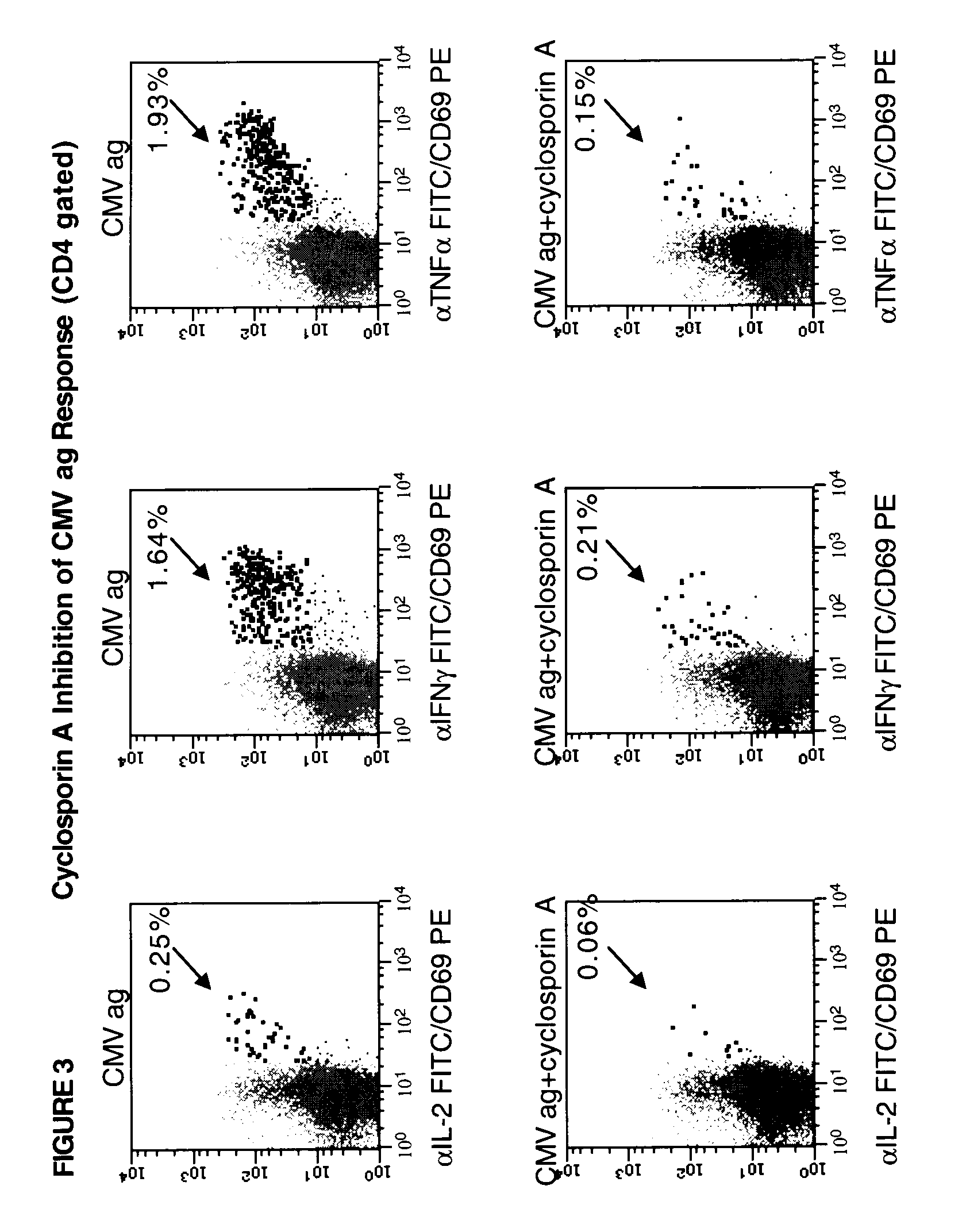Method for detecting T cell response to specific antigens in whole blood
a t cell response and specific antigen technology, applied in the field of detecting t cell response to specific antigens in whole blood, can solve the problems of lack of definitive information methodological, inability to define functional cell types, and little understanding of the development and homeostasis of ag-specific human memory/effector t cells in health or diseas
- Summary
- Abstract
- Description
- Claims
- Application Information
AI Technical Summary
Benefits of technology
Problems solved by technology
Method used
Image
Examples
example 1
Cell Preparation and Antigen Stimulation
[0047]Heparinized whole blood samples were collected from normal or diseased donors using heparin Vacutainer™ blood collection tubes (Becton Dickinson VACUTAINER Systems, Franklin Lakes, N.J.). One ml aliquots of whole blood were dispensed into 16×125 polypropylene tissue culture tubes (Corning Costar Corporation, Cambridge, Mass.).
[0048]Appropriately titred specific or control Ag preparations (60 μl / ml) and in most instances (except as noted), 4 μg anti-CD28 MAbs were added to 1 ml whole blood aliquots. Cultures were incubated at a 5° slant at 37° C. in a humidified 5% CO2 atmosphere for 1 hour with slight agitation to improve APC / T cell interaction, and an additional final 5 hours including a final concentration of 10 μg / ml of Brefeldin A (a relatively non-toxic, but potent, inhibitor of intracellular transport which prevents secretion of any produced cytokines. 20 mM Na2EDTA for a final concentration of 2 mM was then added directly to the w...
example 2
Immunofluorescent Staining
[0049]Cell preparations frozen as described above were rapidly thawed in a 37° C. water bath and then washed once with cold dPBS prior to resuspension in fixation / permeabilization solution (Becton Dickinson Immunocytometry Systems, San Jose, Calif.) at 1×106 cells / 500 ul, and incubation for 10 minutes at room temperature in the dark. These cells were washed twice with dPBS with BSA and sodium azide, and then were stained protected from light with directly conjugated MAbs for 30 minutes. In some experiments, the freezing step was omitted, and cells freshly harvested after Ag activation were cell surface stained first, and then fixed / permeabilized / washed, and then stained for intracytoplasmic Ags. After staining, the cells were washed, refixed in 1% paraformaldehyde in dPBS, and then kept protected from light at 4° C. until analysis on the flow cytometer.
example 3
Flow Cytometric Analysis
[0050]Up to six parameter analysis was performed on a modified FACSort™ (Becton Dickinson) flow cytometer equipped with a second 532 nm line diode laser (BDIS) using FITC, phycoerythrin(PE), and peridinin chlorophyll protein (PerCP), and allophycocyanin (APC) as the 4 fluorescent parameters, using methods of cytometer set up and data acquisition which are well known in the art. Otherwise 5 parameter analysis using up to three fluorescent parameters was conducted on a standard FACScan™ flow cytometer. For a typical analysis, 50,000 events were acquired, gated on CD4 expression and a light scatter gate designed to include only viable lymphocytes (most files required “fine-tuning” of gating during analysis on these same parameters, leaving 48,000 events for the final profiles). In some analyses, additional “live” gating based on a fluorescent parameter (for example, CD69 reactivity) was performed to enhance the sampling of small populations. List mode multiparam...
PUM
| Property | Measurement | Unit |
|---|---|---|
| angle | aaaaa | aaaaa |
| concentration | aaaaa | aaaaa |
| TNF-α | aaaaa | aaaaa |
Abstract
Description
Claims
Application Information
 Login to View More
Login to View More - R&D
- Intellectual Property
- Life Sciences
- Materials
- Tech Scout
- Unparalleled Data Quality
- Higher Quality Content
- 60% Fewer Hallucinations
Browse by: Latest US Patents, China's latest patents, Technical Efficacy Thesaurus, Application Domain, Technology Topic, Popular Technical Reports.
© 2025 PatSnap. All rights reserved.Legal|Privacy policy|Modern Slavery Act Transparency Statement|Sitemap|About US| Contact US: help@patsnap.com



